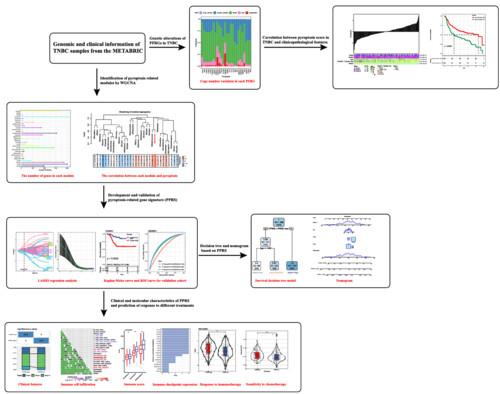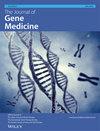Patients with triple-negative breast cancer (TNBC) often have a poor prognostic outcome. Current treatment strategies cannot benefit all TNBC patients. Previous findings suggested pyroptosis as a novel target for suppressing cancer development, although the relationship between TNBC and pyroptosis-related genes (PRGs) was still unclear.
Gene expression data and clinical follow-up of TNBC patients were collected from the Molecular Taxonomy of Breast Cancer International Consortium (METABRIC) and Gene Expression Omnibus (GEO). PRGs were screened using weighted gene co-expression network analysis. Cox regression analysis and the least absolute shrinkage and selection operator (i.e. LASSO) technique were applied to construct a pyroptosis-related prognostic risk score (PPRS) model, which was further combined with the clinicopathological characteristics of TNBC patients to develop a survival decision tree and a nomogram. The model was used to calculate the PPRS, and then the overall survival, immune infiltration, immunotherapy response and drug sensitivity of TNBC patients were analyzed based on the PPRS.
The PPRS model was closely related to clinicopathological features and can independently and accurately predict the prognosis of TNBC. According to normalized PPRS, patients in different cohorts were divided into two groups. Compared with the high-PPRS group, the low-PPRS group had significantly higher ESTIMATE (i.e. Estimation of STromal and Immune cells in MAlignantTumours using Expression data) score, immune score and stromal score, and it also had overexpressed immune checkpoints and significantly reduced Tumor Immune Dysfunction and Exclusion (TIDE) score, as well as higher sensitivity to paclitaxel, veliparib, olaparib and talazoparib. A decision tree and nomogram based on PPRS and clinical characteristics can improve the prognosis stratification and survival prediction for TNBC patients.
A PPRS model was developed to predict TNBC patients' immune characteristics and response to immunotherapy, chemotherapy and targeted therapy, as well as their survival outcomes.




